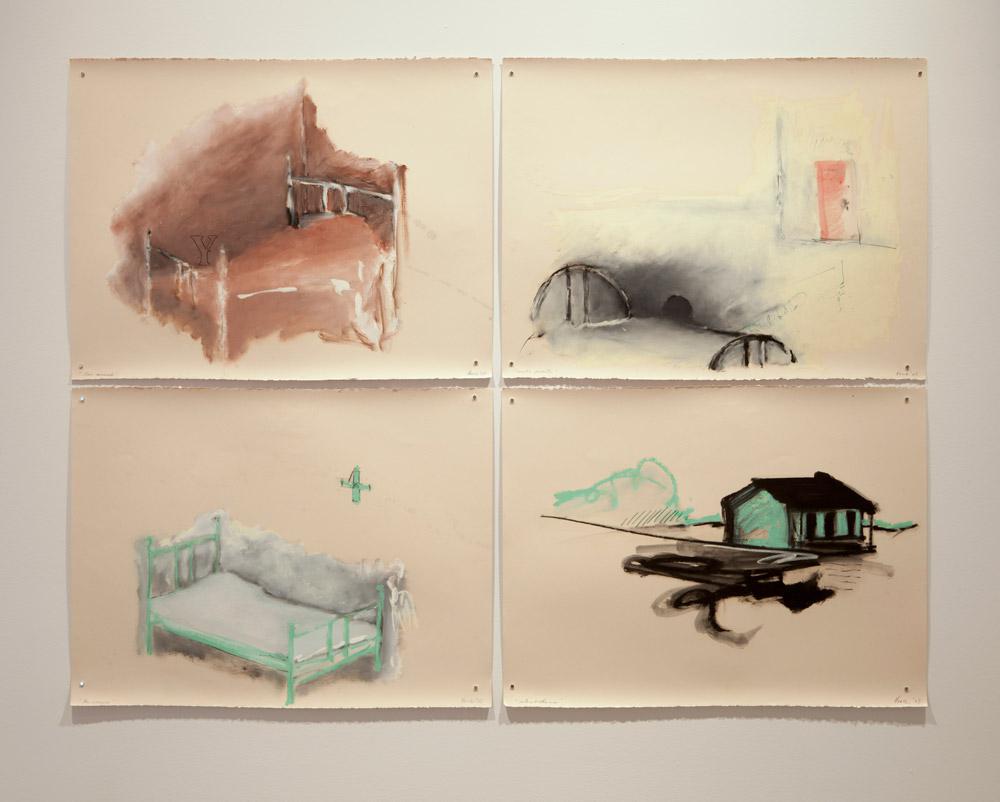Visual malaise is becoming as common as writer’s block. Our brains assess the personal merit of hundreds of images per day. But every so often, art is produced that dispels fatigue, carrying with it the convictions we first came to believe when originally drawn to the visual language. Such work reminds us that art is important, and art is powerful.
Robert Houle’s memory drawings, made in 2009, are a prime example of powerful art. Last month, the University of Manitoba’s School of Art Gallery procured these works for its permanent collection.
At first glance, the artist’s drawings appear wonderfully crude, even sloppy. They depict rows of dormitory beds and religious figures in dense smudges of turquoise, heavy black and earthy brown. It is easy to imagine the oilstick slipping quickly around the paper.
But as their narratives come into focus, they provoke a visceral response. The drawings are fraught with tension, containing palpable shame, anger and dread. We are not only “looking,” we are witnessing. What the drawings describe is the artist’s own traumatized psychic space. Using an automatic approach, Houle allowed his hand to sketch his childhood memories of his time as a student at Sandy Bay Residential School.
In one of the subtler drawings, a remote row of beachfront trees is suggested by pale pink smears. Two black, gestural marks appear within the foreground’s cresting waves. A glance at the title, Beach Predator, confirms a suspicion. The small round shape is the head of a child. The more robust shape could represent the shoulders of an adult swimmer.
Arguably, the show’s most visceral drawing is Night Predator. In a dark room, a figure crouches behind a bed. The red doorway beyond glows with eerie light. It is the stuff of childhood nightmares, invoking a dry-mouthed, elemental fear.
Indeed, the memories are drawn as a child would draw them; the site of abuse is described as an ominous black door, the instrument of abuse as a kneeling priest’s oversized hand. There may be childlike hyperbole, but there is no irony to step over, no too-clever art-historical reference. The drawings are completely unselfconscious and amazingly raw.
As witness of memory, we find ourselves in the hazy space between immediacy and delay. The drawings make an immediate impression. But, remarkably, we are then able to experience Houle’s memories along with him, at the same exploratory pace. And we are able to experience related horror, rage and sadness as well.









